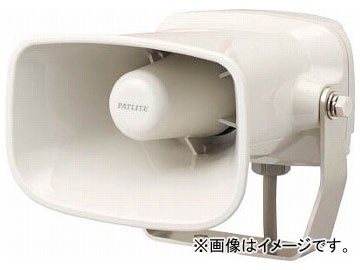商品の詳細




商品の説明

DIOR Homme ダウンジャケット 46サイズ

OVY 2nd Type Heavy Oz Denim Jacket

正規品 HARSH AND CRUEL スタジャン ジャケット Lサイズ

ドルガバ ピンクベージュ 36

supreme north 700fillダウンパーカ ティール 即日発送

22aw snow peak x relume ダウンベスト

AMERI アメリ バックプリーツコート ロングコート グレージュ

URCOOL ファージャケット

オールドマンズテーラー R&D.M.CO リネンヘリンボーンコート

80-90's VINTAGE LANVIN ダブルブレストチェスターコート

APE コーチジャケット

★90s vintage ダブルボタン シープスキン レザージャケット 本革

New Manual 012 LV 36’s JACKET GQ SHOP

サンローラン スタジャン
最新のクチコミ
3歳の娘に買いました。靴は16.5㌢をはいてます。しっかりとした生地でモモの所までくるので、スカートをはいても寒くなく重宝してます。
- rxb*****さん
- 70歳
- アトピー
- クチコミ投稿 4件
購入品
安価で余り期待はしていませでしたが昨日商品が届き着用して見ました。軽くて温かく正直良い買い物したと思っています。この値段で上質ダウンジャケットが買えるのが得した感じです。ダウンジャケットてコメントと実際は違う商品が多く今回はそのコメント通りの商品で本当に有難うございました。
- ato*****さん
- 49歳
- アトピー
- クチコミ投稿 3件
購入品
サイズ、着心地ともにとても良いです。ただ、使用し始めて1週間で背中側の文字がとれはじめました。手芸用のボンドでとめてつかってます…
- izg*****さん
- 69歳
- アトピー
- クチコミ投稿 1件
購入品
満足してます!またお願いしたいとおもいます!
- kmy*****さん
- 33歳
- アトピー
- クチコミ投稿 1件
購入品
持ち歩きにも便利で時間ができた時にサッと塗れるのがいいです。それを見た友人も興味を持って聞いて来たのでプレゼントしました。それ程高いものでもないので気軽にプレゼント出来て、しかも喜ばれたので逆に私の方が嬉しくなりました。
- afd*****さん
- 40歳
- アトピー
- クチコミ投稿 5件
購入品
プレゼント用で購入しました。サイズが間違えてきてたので問い合わせたところ、すぐ対応していただきました。生地は薄めで冬は着れないかなって感じでした。デザインは可愛いので満足です
- bqn*****さん
- 42歳
- アトピー
- クチコミ投稿 2件
購入品
今、病気で入院している母が帰ってきたら、ベット生活になり、必要になるために購入しました。組み立ては息子がしてくれましたが、とて簡単にできました。全体的にはとても良い商品だと思います。上下の上げ下げが少し力が必要なのが気になりましたが、そんなに頻繁にはしないと思うので、購入してよかったなと思いました。
- adt*****さん
- 59歳
- アトピー
- クチコミ投稿 5件
購入品
2枚同色セットにしなくてはならないのが、少し残念ですが、安いのを優先してリピしました。前回はブルーにしたのですが、脇のテープだけブルーで ほぼ白。うすーいブルーなのかもしれませんが、ちょっと残念だったので、今回はブラウンにしました。濃すぎないブラウンで綺麗です。親の介護用ベッドに敷いています。介護オムツも使用してるので、漏れる事もなく、予防で使ってます。ボックスシーツのようにマットレス全体を覆うのでは無いので、横とかまでカバーできませんが、何と言っても洗濯時にボックスシーツより乾きやすい!乾かす手間が楽!なのが良いです。
- fsg*****さん
- 57歳
- アトピー
- クチコミ投稿 5件
購入品
小学3年生の子供のデスクチェアーに赤を購入しました。組立は15分ほどで簡単でした。座り心地もよく。コロもスムーズでいい感じです。ただ、子供一人では体重が軽い為か椅子を下げるのが難しいです。なので☆-1にしました。それ以外は問題なくお値段も安いのでお勧めできる商品です!
- qfp*****さん
- 67歳
- アトピー
- クチコミ投稿 1件
購入品
iPhone11でSuica使用、普通に読み込みました。
- trb*****さん
- 55歳
- アトピー
- クチコミ投稿 4件
購入品
数が多く、夜着にしていただいた関係なのか、若干の死着が見受けられました。(ミナミヌマエビ)それ以外は良好です。
- aqf*****さん
- 56歳
- アトピー
- クチコミ投稿 5件
購入品
1時間ほどの作業で組立できました。素手で作業してしまった為、翌朝なんか指痛いなーと思ったら棘が刺さっており膿んでました...軍手等は必須でしたねぇ。木製は初めてなので、まだにゃんこ達が使ってくれません。ストアさんの対応はとても良いです。丁寧な封書も添付あったので分かりやすかったです。
- zrw*****さん
- 65歳
- アトピー
- クチコミ投稿 4件
購入品
まとめ買いしました。食いつきとてもいいです。画像はカットされてるように見えますが、ひとかたまりになっています。スプーンで崩してあげないと食べにくいかも。まとめて買うとお安くなるし、よく食べてくれるのでなくなったらまたリピートします。
- qik*****さん
- 70歳
- アトピー
- クチコミ投稿 1件
購入品
甥っ子の結婚式があるので購入しました。おばさん体型なので着れるかどうか不安でしたが11号でもゆったり着れました。袖のレースで綺麗な感じがしました。ひとつ気になるのがウエストかな。もう少し、絞ってあってもいいかな!ゴムなのでゆったり着れますが、お腹が強調される気がしますが着方を工夫すればいいかな?って感じです。お値段の割にいい買い物できてよかったです。
- opj*****さん
- 60歳
- アトピー
- クチコミ投稿 2件
購入品
彼が好みだったので、購入しました!チャクヨウスルト肩ひも部分が少し短いなと思いましたが、ゴムなのでなんとかセクシーに着ることができました。セクシー好きな彼からすると、背中から見るのが良いらしく、後ろ姿がセクシーに見えます。
- ydf*****さん
- 41歳
- アトピー
- クチコミ投稿 4件
購入品
生地の良さが気に入ってリピートしました。ぴちッとしたフィット感で履きたいのでSサイズがいいのですが、フロントの立体がもう少しモッコリするように作ってくれたらいいのになーといつも思います。Gstationは今まで購入した全てがフロント小さめです。
- edm*****さん
- 49歳
- アトピー
- クチコミ投稿 2件
購入品
ジャケット・アウターのデイリーランキング
-
-
1

APE コーチジャケット
ジャケット・アウター
¥12,000
-
4

サンローラン スタジャン
ジャケット・アウター
¥45,000
-
この商品を見ている人におすすめ
-
-
 phiten ラクワ 磁気チタンネックレス バレット [0217TG738153]|Joshin web 家電とPCの大型専門店](https://tshop.r10s.jp/jism/cabinet/1346/4940756389300.jpg)
磁気ネックレス
¥7,744
-

食器棚・キッチンボード
¥71,979
-

その他
¥10,138
-

その他DIY工具
¥18,788
-

レディース財布
¥159,000
-

